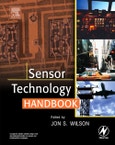Without sensors most electronic applications would not exist-they perform a vital function, namely providing an interface to the real world. The importance of sensors, however, contrasts with the limited information available on them. Today's smart sensors, wireless sensors, and microtechnologies are revolutionizing sensor design and applications. This volume is a comprehensive sensor reference guide to be used by engineers and scientists in industry, research, and academia to help with their sensor selection and system design. It is filled with hard-to-find information, contributed by noted engineers and companies working in the field today. The book offers guidance on selecting, specifying, and using the optimum sensor for any given application. The editor-in-chief, Jon Wilson, has years of experience in the sensor industry and leads workshops and seminars on sensor-related topics. In addition to background information on sensor technology, measurement, and data acquisition, the handbook provides detailed information on each type of sensor technology, covering:� technology fundamentals� sensor types, w/ advantages/disadvantages� manufacturers� selecting and specifying sensors� applicable standards (w/ urls of related web sites)� interfacing information, with hardware and software info� design techniques and tips, with design examples� latest and future developmentsThe handbook also contains information on the latest MEMS and nanotechnology sensor applications.
Please Note: This is an On Demand product, delivery may take up to 11 working days after payment has been received.








